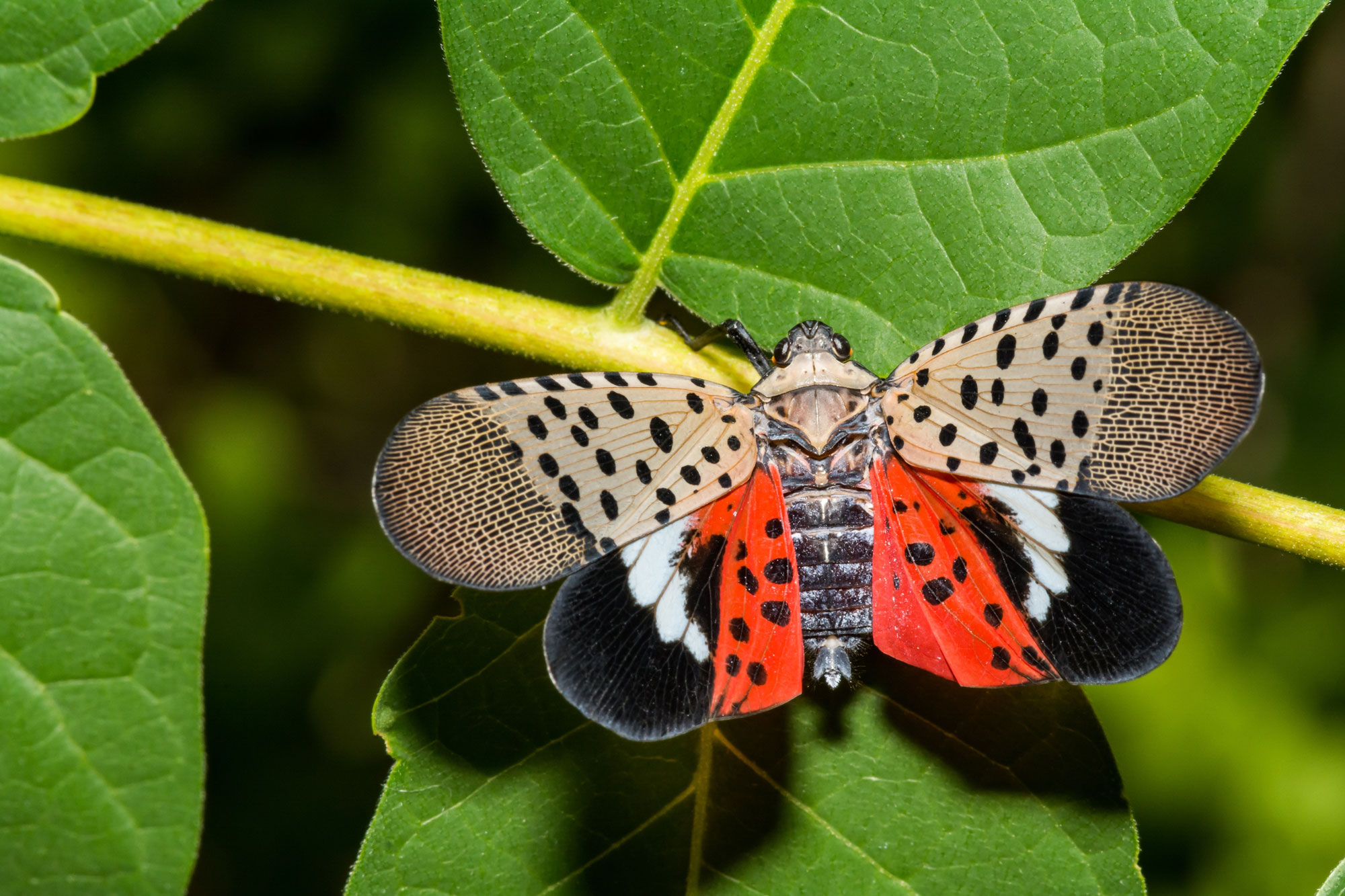You've heard the buzz on spotted lanternflies. Should you be worried?

Spotted lanternfly moths have been getting plenty of headlines the past few years. You've probably seen news stories instructing people to kill them on sight, or even offering bounties for turning in dead specimens of the insects.
Why so much concern for an insect that poses no risk to people? Because these invasive insects aren't totally harmless. Although the spotted lanternfly isn't a danger to humans or even other animals, it can damage trees and, in turn, cause harm to economies that depend on trees and timber, according to the University of Illinois Extension.
Spotted lanternflies are native to parts of Asia. They were first seen in the United States in 2014 in Berks County, Pennsylvania, likely making their way here in shipping containers, according to the USDA Animal and Plant Health Inspection Service. As of July 2024, the invasive insect has been reported in 17 states, including Illinois. It was first reported in Illinois in September 2023, according to the Illinois Department of Agriculture.
Once these insects hatch, they begin to feed on woody plant matter, and therein lies the problem. They are capable of damaging the trees they feed on in two ways. First, they have sharp mouthparts that pierce and can harm the trees as they look for the sap inside, the Fish and Wildlife Service reports. And as they eat, they secrete a substance called honeydew that attracts more insects to the trees. This, in turn, puts the trees at risk of a dangerous fungus called sooty mold.
Another concern about the spotted lanternfly is that it has spread more quickly than other invasive insects. For example, the spongy moth (formerly the gypsy moth), took nearly a century to spread from Massachusetts to New York, but the spotted lanternfly spread to 10 states in just seven years and has continued to expand, according to the U.S. Fish and Wildlife Service.
The insects have shown a strong preference for eating tree of heaven. These trees are also invasive in our area, having been introduced here in the 1700s, according to the University of Illinois Extension. Because it grows well in poor-quality soils, it was often planted in urban areas where other trees did not thrive. While tree of heaven is considered the host plant, it is not the only tree spotted lanternflies will feed on. Not even close. It is known to feed on at least 103 plant species found in the United States.
Among the other trees the spotted lanternflies feed on are black walnut, red maple, silver maple, apple trees and grapevine, the Illinois extension reports. Grapevine is particularly sensitive to damage caused by the insects.
Spotted lanternflies are a type of planthopper, and these insects are noted for their skill at hopping plant to plant and hanging on tightly when they land, according to the U.S. Fish and Wildlife Service. Their life cycle includes three stages: egg, nymph and adult. It takes just a few months to complete the entire cycle after the eggs hatch.
In the fall, female lanternflies lay eggs on bark and in other spots like rocks and even man-made structures, according to the University of Illinois Extension. The nymphs hatch in the spring, usually in late April or early May, and they begin to feed immediately.
The nymphs transition through four stages, called instars, as they grow. In their first instar, they are about a quarter-inch, black with white spots. They remain black with white spots until their fourth and final instar. At this stage they have grown to a half-inch and are mostly red but with black markings and white spots. The adults typically emerge by late July and mate in August and into fall.
 The different stages of a spotted lanternfly. (Photo via Shutterstock)
The different stages of a spotted lanternfly. (Photo via Shutterstock)
In their adult form, spotted lanternflies are a striking-looking insect. They have gray or beige forewings with black spots toward the middle, with the ends covered in smaller, more intricate black markings that make them look darker in color. Their hindwings are bright red and black, with the red part containing black spots and the black part covered with a white band, the University of Illinois Extension reports. Their abdomens are black with yellow bands between the segments. As adults they are about 1 inch long and a half-inch wide.
Illinois officials ask that spotted lanternflies be removed and destroyed when found, but before destroying them take a photo and report the sighting. All Illinois sightings can be reported via email at [email protected].
Slowing the spread of the spotted lanternfly will require collaboration across all levels of government, but there are things you can do at home to help prevent further destruction by this invasive species. First, take the time to learn the life cycle of the spotted lanternfly so you can ID them at every stage, the Fish and Wildlife Service recommends.
It's also important to know how to recognize the tree of heaven, since this is where you are most likely to see the insects. Removing tree of heaven can be difficult because removal allows for new growth along its root system, the Fish and Wildlife Service reports.
You should also get in the habit of checking your vehicle and outdoor gear and equipment before traveling. If you find egg masses, destroy them by enclosing them in a plastic bag with hand sanitizer. They lay their eggs in the fall, so this is the more important season to check your belongings.
